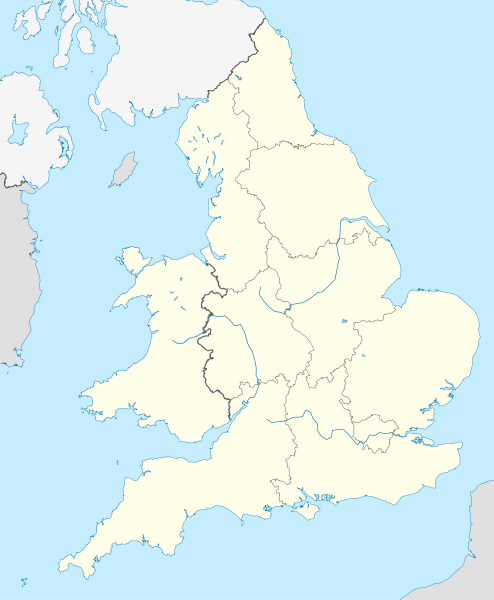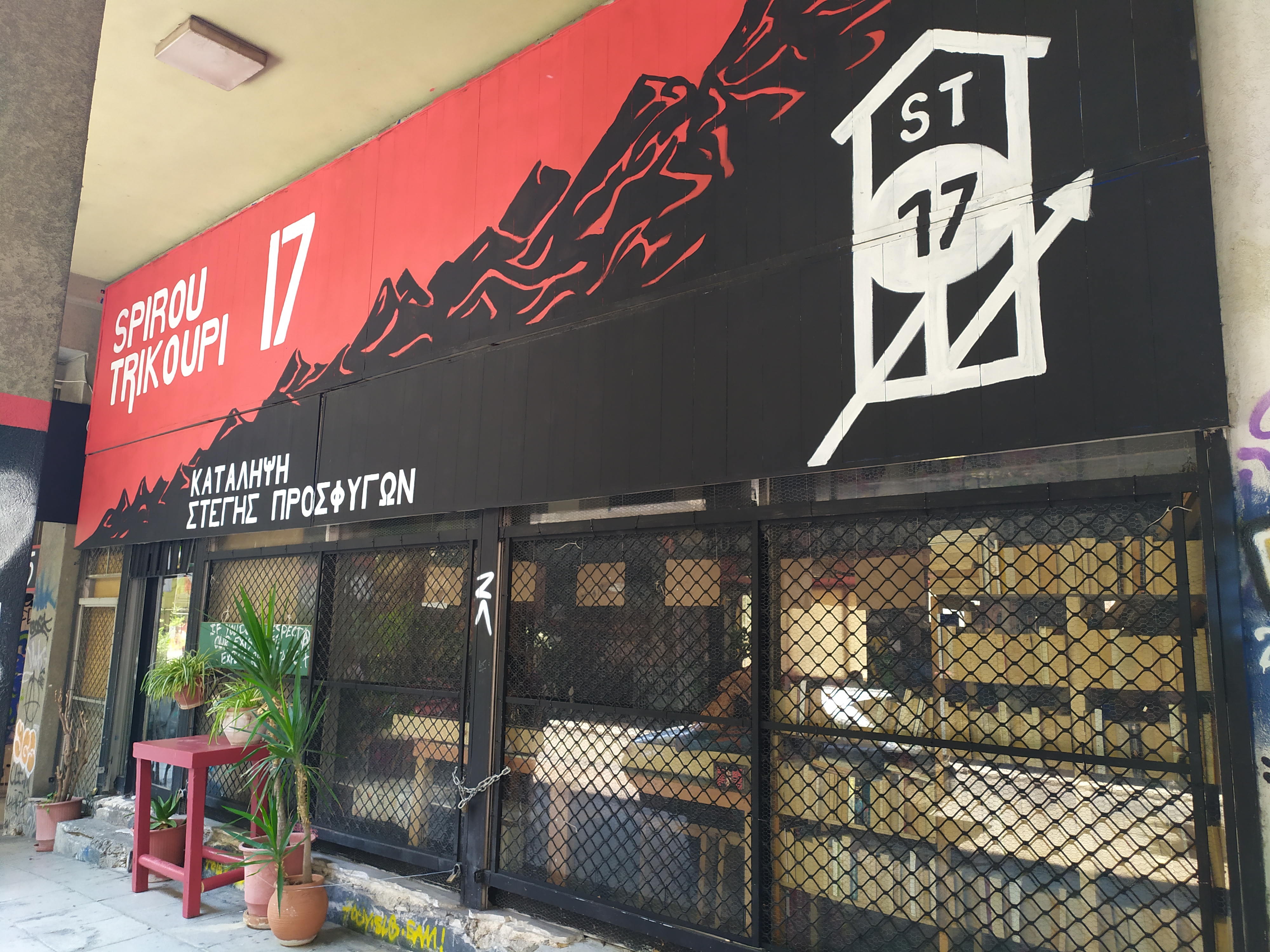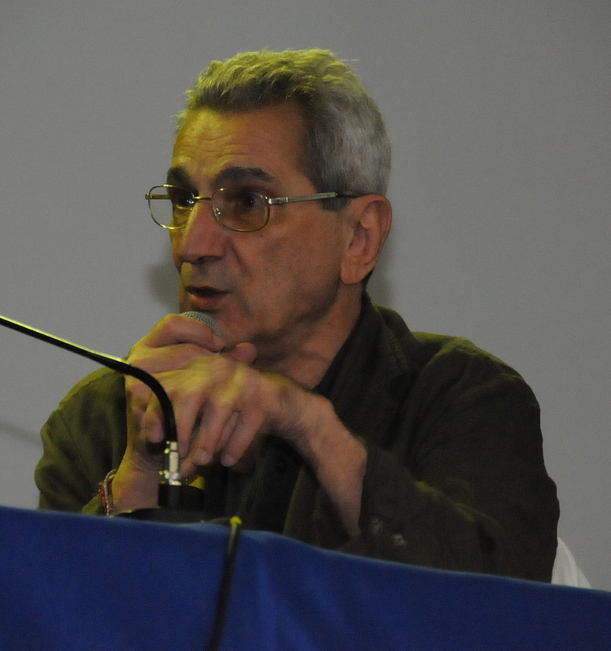|
Squatting
Squatting is the action of occupying an abandoned or unoccupied area of land or a building, usually residential, that the squatter does not own, rent or otherwise have lawful permission to use. The United Nations estimated in 2003 that there were one billion slum residents and squatters globally. Squatting occurs worldwide and tends to occur when people who are poor and homeless find empty buildings or land to occupy for housing. It has a long history, broken down by country below. In developing countries and least developed countries, shanty towns often begin as squatted settlements. In African cities such as Lagos much of the population lives in slums. There are pavement dwellers in India and in Hong Kong as well as rooftop slums. Informal settlements in Latin America are known by names such as villa miseria (Argentina), pueblos jóvenes (Peru) and asentamientos irregulares (Guatemala, Uruguay). In Brazil, there are favelas in the major cities and land-based movements. I ... [...More Info...] [...Related Items...] OR: [Wikipedia] [Google] [Baidu] |
Squatting In England And Wales
In England and Wales, squatting—taking possession of land or an empty house the squatter does not own—occurs for a variety of reasons which include needing a home, protest, poverty, and recreation. Many squats are residential; some are also opened as social centres. Land may be occupied by New Age travellers or treesitters. There have been waves of squatting through British history. Squatting was "a big issue in the Peasants' Revolt of 1381 and again for the Diggers in the 17th Century howere peasants who cultivated waste and common land, claiming it as their rightful due" and that squatting was a necessity after the Second World War when so many were homeless.''Squatters: Who are they and why do they squat?'' , BBC A more recent wave began in the late 1960s in the midst of a housing crisis. ... [...More Info...] [...Related Items...] OR: [Wikipedia] [Google] [Baidu] |
Squatting In The Netherlands
Squatting in the Netherlands (Dutch: kraken) is the occupation of unused or derelict buildings or land without the permission of the owner. The modern squatters movement (Dutch: kraakbeweging) began in the 1960s in the Netherlands. By the 1980s, it had become a powerful anarchist social movement which regularly came into conflict with the state, particularly in Amsterdam with the Vondelstraat and coronation riots. Some squats in cities have successfully legalised into still extant social centres and housing cooperatives such as ACU in Utrecht, the Grote Broek in Nijmegen, the Landbouwbelang in Maastricht, ORKZ in Groningen, the Poortgebouw in Rotterdam and Vrankrijk in Amsterdam. There have also been squats in the countryside such as Fort Pannerden and the Ruigoord village. Squatting was criminalised in October 2010. Between then and November 2014, 529 people were arrested. Some recent high-profile evictions have included ADM, the Tabakspanden and De Vloek. The social movemen ... [...More Info...] [...Related Items...] OR: [Wikipedia] [Google] [Baidu] |
Squatting In The United States
Squatting in the United States is the unauthorized use of real estate. Historically, squatting occurred during the California Gold Rush and when colonial European settlers established land rights. There was squatting during the Great Depression in Hoovervilles and also during World War II. Shanty towns returned to the US after the Great Recession of 2007 to 2009 and in the 2010s, there have been increasing numbers of people squatting foreclosed homes using fraudulent documents. In some cases, a squatter may be able to obtain ownership of property through adverse possession. Squatting is illegal and squatters can be evicted for trespassing. A homesteading movement led by community organizations such as the Association of Community Organizations for Reform Now (ACORN), Operation Homestead, Tacoma Housing Now and Take Back the Land has used squatting as a tactic to house homeless people. In New York City, squatters occupied 32 buildings on Manhattan's Lower East Side in the 1990s ... [...More Info...] [...Related Items...] OR: [Wikipedia] [Google] [Baidu] |
Squatting In Spain
Squatting in Spain refers to the occupation of unused or derelict buildings or land without the permission of the owner. In Francoist Spain migrant workers lived in slums on the periphery of cities. During the Spanish transition to democracy, residential squatting occurred in Spanish cities such as Barcelona, Bilbao, Madrid, Valencia and Zaragoza. From the 1980s onwards a new generation of squatters set up self-managed social centres which hosted events and campaigns. The 1995 Criminal Code among other things criminalised squatting, but failed to stop it. Social centres exist across the country and in Barcelona and Madrid in particular. In the Basque Country they are known as . Overview Francoist Spain ended with the death of Francisco Franco in 1975. In the following year, the numbers of people striking increased from 500,000 to over 5 million and social movements blossomed. During the Spanish transition to democracy, residential squatting occurred in cities such as Barcelona, Bi ... [...More Info...] [...Related Items...] OR: [Wikipedia] [Google] [Baidu] |
Self-managed Social Centers In Italy
Self-managed social centres in Italy exist in many cities. They are part of different left-wing political networks including anarchist, communist, socialist, and autonomist. The centres (Italian: centri sociali) tend to be squatted and provide self-organised, self-financing spaces for alternative and noncommercial activities such as concerts, exhibitions, farmers' markets, infoshops, and migrant initiatives. Over time, some but not all projects have opted to legalize their status. History Self-managed social centres were first occupied in the mid-1970s in cities such as Milan by groups of young people, both students and unemployed. The social centres in Milan were used for diverse activities such as concerts, films, yoga classes, discussion groups and counselling for drug addicts. They often affiliated themselves with Autonomia Operaia (Workers' Autonomy) and suffered when social movements were repressed following the Years of Lead. A second wave of social centres began in t ... [...More Info...] [...Related Items...] OR: [Wikipedia] [Google] [Baidu] |
Athens Refugee Squats
Athens refugee squats exist since the 2015 spike in the European migrant crisis. Greece has been a destination for migrants seeking refuge on the European continent via the "Balkan Route." Coalitions of solidarity groups and migrants have established squats throughout Athens (mostly in Exarcheia) to house refugees, demonstrating an alternative to solutions offered by the European Union and NGOs. The squats are grouped together in the Coordination of Refugee Squats. Notable projects included 5th School and City Plaza. In late 2019, the New Democracy party declared it would evict all the squats. Background Following the 2008 financial crisis, a Greek government-debt crisis prompted the European Troika to implement austerity policies in the form of three distinct memoranda, despite public protest. Widespread poverty and unemployment led to unstable political conditions, and high percentages of housing and storefronts sat unoccupied. Emerging as an alternative to and critique of EU ... [...More Info...] [...Related Items...] OR: [Wikipedia] [Google] [Baidu] |
Autonomist
Autonomism, also known as autonomist Marxism is an anti-capitalist left-wing political and social movement and theory. As a theoretical system, it first emerged in Italy in the 1960s from workerism (). Later, post-Marxist and anarchist tendencies became significant after influence from the Situationists, the failure of Italian far-left movements in the 1970s, and the emergence of a number of important theorists including Antonio Negri, who had contributed to the 1969 founding of as well as Mario Tronti, Paolo Virno and Franco "Bifo" Berardi. George Katsiaficas summarizes the forms of autonomous movements saying that "In contrast to the centralized decisions and hierarchical authority structures of modern institutions, autonomous social movements involve people directly in decisions affecting their everyday lives, seeking to expand democracy and help individuals break free of political structures and behavior patterns imposed from the outside". This has involved a call for the ... [...More Info...] [...Related Items...] OR: [Wikipedia] [Google] [Baidu] |
Villa Miseria
A ''villa miseria'' (), or just ''villa'', is the informal term for a type of shanty town slum found in Argentina, mostly around the largest urban settlements. Name The term is a noun phrase made up of the Spanish words ''villa'' (''village'', ''small town'') and ''miseria'' (''misery'', ''destitution''), and was adopted from Bernardo Verbitsky's 1957 novel ''Villa Miseria también es América'' ("Villa Miseria is also part ofthe Americas"). These shanty towns are euphemistically called ''asentamientos'' ("settlements") or ''villas de emergencia'' ("emergency villages"). In most parts of Argentina, the non-modified word ''villa'' usually refers to a ''villa miseria''. Informal settlements These settlements consist of small houses or shacks made of tin, wood and other scrap material. The alleys are not usually paved, and narrow internal passages connect the different parts. The villas miseria have no sewerage. There may be water pipes passing through the settlement. Electric po ... [...More Info...] [...Related Items...] OR: [Wikipedia] [Google] [Baidu] |
Asentamiento
An asentamiento irregular, known colloquially as an asentamiento () is a shanty town in Latin America, particularly around Guatemala City and Montevideo. Most have been established in the last 20 years as a result of economic inequalities between rural and metropolitan areas in Guatemala and Uruguay. Guatemala City In 15 of the 23 districts of Guatemala City, there are precarious settlements. In 1984, there were 103 and by 1991 there were 232. In 2016 there were 297. In 1984, 800 families made a land invasion and successfully squatted an area called El Mezquital. The settlement eventually swelled to over 25,000 people. It was the first successful occupation since 1976. These places have been considered "red zones" inside Guatemala City, because of their high crime rate and some of them are El Caracol, Cañaverales, El Rinconcito. A famous ''asentamiento'' in Guatemala is La Limonada. With a population of around 60,000 it is one of the largest slums in Latin America outside Braz ... [...More Info...] [...Related Items...] OR: [Wikipedia] [Google] [Baidu] |
Informal Settlements
Informal housing or informal settlement can include any form of housing, shelter, or settlement (or lack thereof) which is illegal, falls outside of government control or regulation, or is not afforded protection by the state. As such, the informal housing industry is part of the informal sector. To have informal housing status is to exist in "a state of deregulation, one where the ownership, use, and purpose of land cannot be fixed and mapped according to any prescribed set of regulations or the law". While there is no global unified law of property-ownership, typically, the informal occupant or community will lack security of tenure and, with this, ready or reliable access to civic amenities (potable water, electricity and gas supply, road creation and maintenance, emergency services, sanitation and waste collection). Due to the informal nature of occupancy, the state will typically be unable to extract rent or land taxes. The term "informal housing" is useful in capturing th ... [...More Info...] [...Related Items...] OR: [Wikipedia] [Google] [Baidu] |
Favelas
Favela () is an umbrella name for several types of working-class neighborhoods in Brazil. The term was first used in the Providência neighborhood in the center of Rio de Janeiro in the late 19th century, which was built by soldiers who had lived under the favela trees in Bahia and had nowhere to live following the Canudos War. Some of the first settlements were called ''bairros africanos'' (African neighborhoods). Over the years, many former enslaved Africans moved in. Even before the first favela came into being, poor citizens were pushed away from the city and forced to live in the far suburbs. Most modern favelas appeared in the 1970s due to rural exodus, when many people left rural areas of Brazil and moved to cities. Unable to find places to live, many people found themselves in favelas. Census data released in December 2011 by the Brazilian Institute of Geography and Statistics (IBGE) showed that in 2010, about 6 percent of the Brazilian population lived in favelas ... [...More Info...] [...Related Items...] OR: [Wikipedia] [Google] [Baidu] |
Cañada Real
Cañada Real is a shanty town in the Madrid Region of Spain, a linear succession of informal housing following a 14.4-kilometre-long stretch of the drovers' road connecting La Rioja and Ciudad Real. The largest illegal settlement in a European city, it extends through the municipalities of Coslada, Rivas-Vaciamadrid and Madrid. Location Cañada Real is situated on the Cañada Real Galiana, one of the traditional cattle roads running from La Rioja to Ciudad Real and close to the M50 motorway, Madrid's third outer ring road. The irregular settlement features both high-end detached houses as well as pockets of extreme poverty. The initial settlement, started in the 1950s and 1960s was built on what currently forms part of the Coslada urban centre; many of the residents later bought the land from the State. It is considered the largest illegal settlement in a European city. The Cañada Real is divided into 6 subsectors: the Sector 1 (the first 0.52-kilometre-long stretch in Coslada ... [...More Info...] [...Related Items...] OR: [Wikipedia] [Google] [Baidu] |










